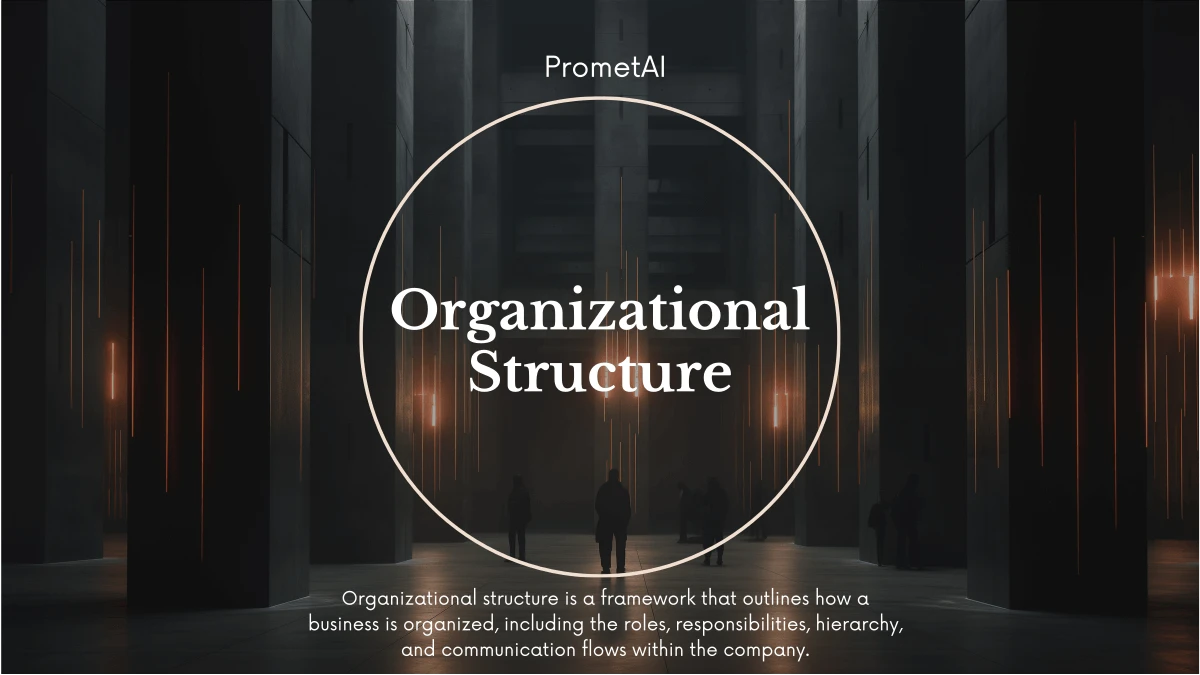Organizational structure is a framework that outlines how a business is organized, including the roles, responsibilities, hierarchy, and communication flows within the company. It defines how tasks are divided, coordinated, and directed to achieve the organization's goals. The structure can have a significant impact on a company's efficiency, productivity, and culture.

The organizational structure should be flexible enough to adapt to changes in the business environment. Companies that adopt adaptable structures, such as matrix or hybrid forms, are better positioned to respond to market dynamics, innovate, and meet evolving customer needs.
Effective organizational structures establish clear lines of communication across all levels of the company. This clarity helps in reducing confusion, ensuring that everyone understands their roles and responsibilities, and facilitates smoother decision-making processes.
A well-defined organizational structure provides clear role delineation and accountability. Employees who understand their specific responsibilities and how they contribute to the broader organizational goals are more likely to be engaged and productive.
The chosen structure should align closely with the company's strategic objectives. Whether the goal is innovation, speed to market, service excellence, or cost-efficiency, the structure should support these aims, directly influencing the organization’s ability to succeed in its mission.
Learning Materials
Understanding organizational structures involves recognizing systems that guide company activities and employee roles. It defines how tasks are allocated, supervised, and coordinated to achieve company goals. Each employee's role and relationship within the firm are made clear, ensuring operational efficiency and clarity.
Organizational Structure Chart: This visual tool depicts the hierarchy and reporting lines within a company. Starting with top management, it details each level of authority down to frontline employees. It is crucial for visualizing relationships and communication flows between different levels of the organization. Such charts are especially useful in larger organizations to maintain clarity and governance.
Centralized Organizational Structure
In a centralized structure, decision-making is confined to top-level management only. This approach streamlines decision-making processes, ensuring consistency across the organization. However, it may slow responsiveness and reduce empowerment among lower-level employees.
Decentralized Organizational Structure
Decentralized structures distribute decision-making power across various levels and departments. This fosters autonomy, innovation, and faster response to local needs. It encourages employee empowerment and engagement but may lead to inconsistent decisions across the organization.
Types of Organizational Structures
Organizational structures vary widely to suit different company strategies and operational needs. Here are some common types, each with distinct advantages and challenges:
Hierarchical Structures:
Feature clear levels of authority.
Can hinder fast decision-making.
Flat Structures:
Reduce bureaucracy.
Foster faster communication and decision processes.
Matrix Structures:
Create flexible teams for specific projects.
Enhance innovation but may confuse.
Divisional Structures:
Focus on results by segments.
Suitable for large, diverse companies.
Each structure impacts company efficiency and adaptability differently, making it essential to choose the right one for your business needs.
PrometAI’s Organizational Structure Example
PrometAI adopts a hybrid organizational structure, blending hierarchical and matrix models.
Top Level:
Board of Directors
Executive Management: CEO, CFO, CTO
Key Departments:
Product Development
Sales and Marketing
Customer Support
Human Resources
Finance
Department Leadership:
Each department is headed by a Director.
Directors report to Executive Management.
Matrix Structure within Departments:
Teams organized around specific projects or functions.
Cross-functional teams include members from different departments.
Example: A product development team with AI experts, software developers, and market analysts.
This structure promotes flexibility, encourages collaboration across departments, and allows for efficient resource allocation and rapid response to market changes.
